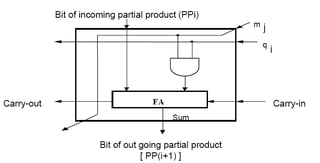there are several ways to conceptualize this, esp using the psychological concept of chunking which is rougly equivalent to the use of "abstraction(s)" in CS. what part is hard to understand? the conversion of factoring to SAT is much easier to understand if you learn how EE circuits implement binary arithmetic (mainly addition), and to note that multiplication is repeated addition of a shifted multiplicand, and in binary multiplication, this is reduces to bits of the multiplier simply "masking" the shifted multiplicand.
the SAT formula specifies, via a set of constraints, a relation between "input" and "output" bits equivalent to binary multiplication. it is actually like a 2-way computation device because it naturally computes in a forward direction $f(x,y)= x \cdot y = z$ and in a "reverse" (inverse) direction $f^{-1}(z)=x \cdot y$.
for multiplication implemented in SAT, specify the "input" bits, and leave "output" bits unassigned (via what are called "unit clauses") and solve the CNF formula for "output" bits. for factoring, specify the "output" bits without specifying the "input" bits.
in EE addition circuits are called "half/full adders". then the only task is to convert these circuits into SAT (CNF) formulas. binary addition of bit vectors is done most simply with a string of full adders where each carry bit feeds into the next stage of the addition, the so-called "ripple carry adder".
here is a nice slideshow on converting binary/bitvector arithmetic to propositional logic aka "bitblasting". on slide 8 the CNF formula for a full adder is given. slide 10 has the same ripple carry adder.


